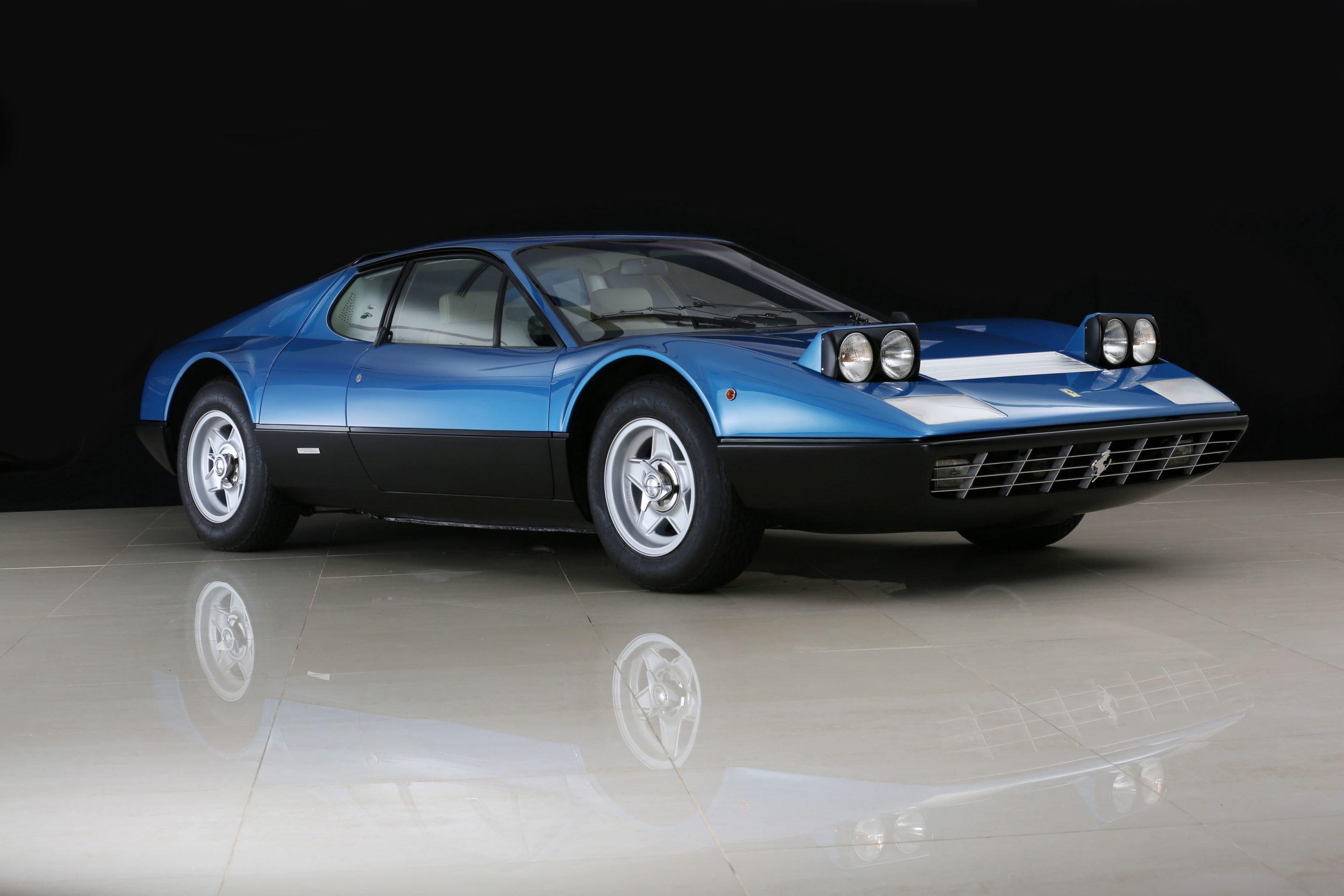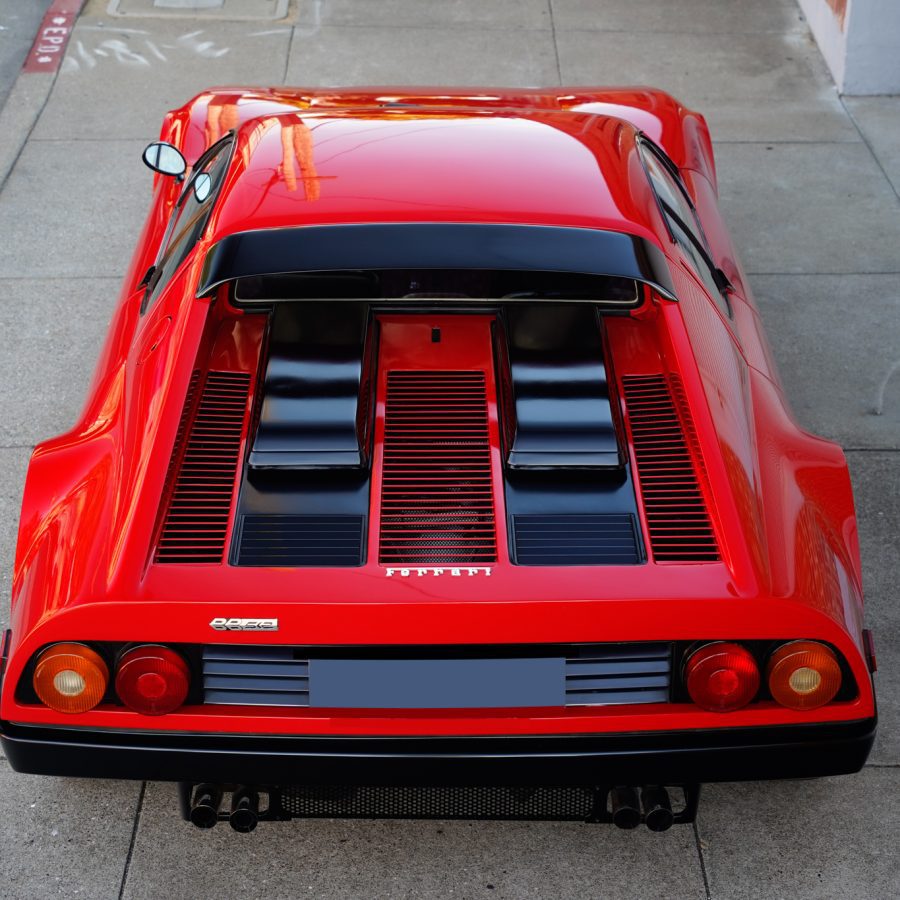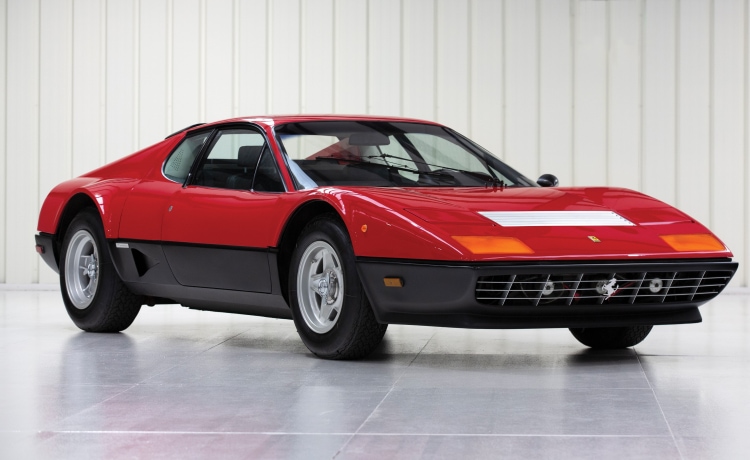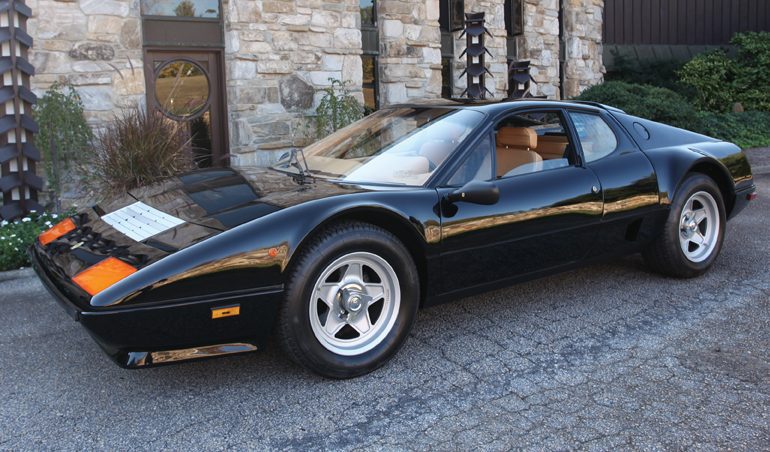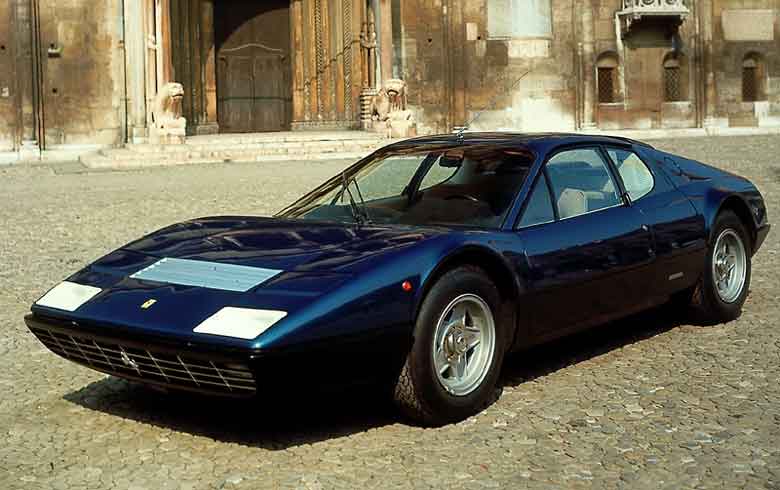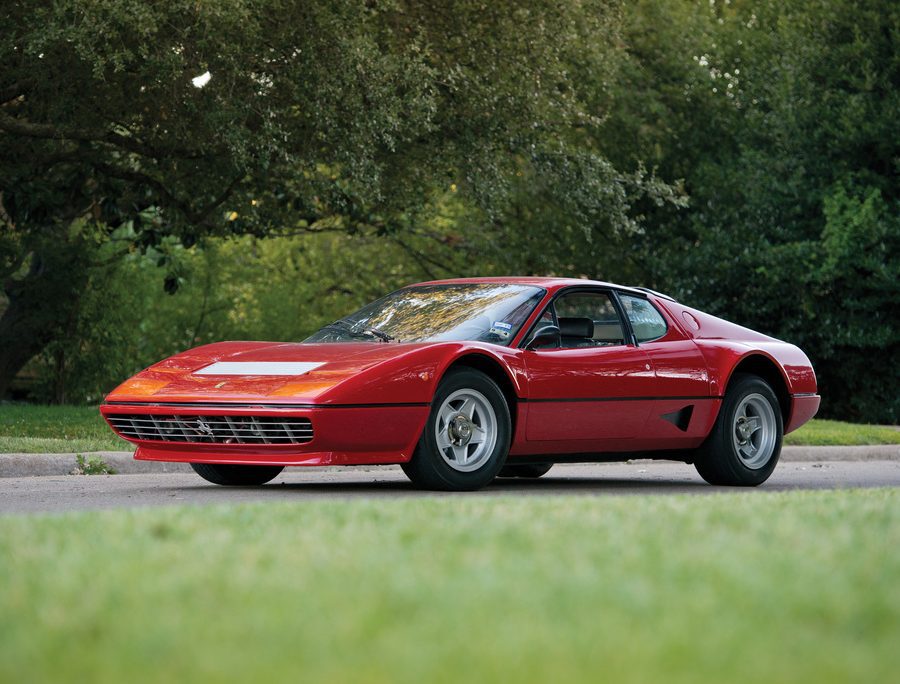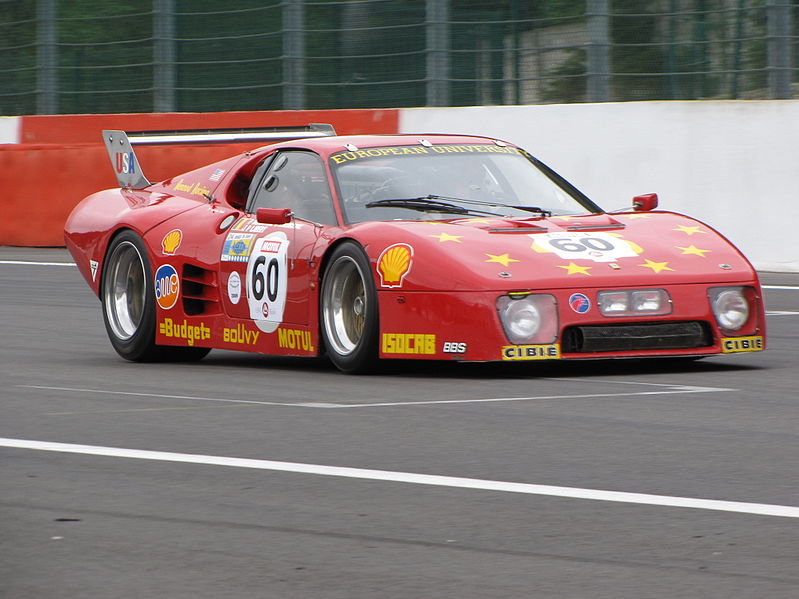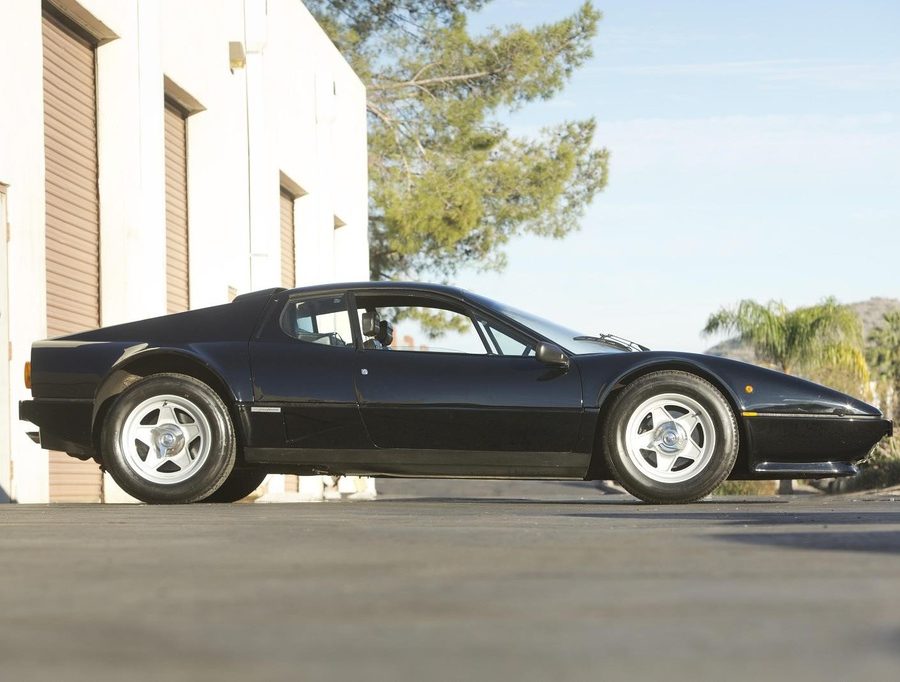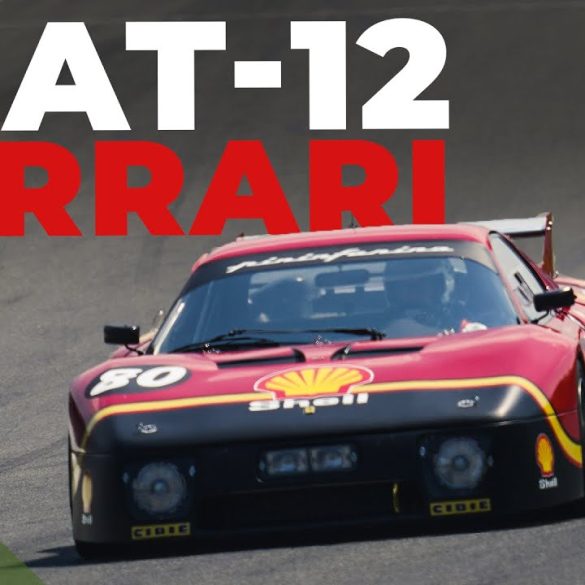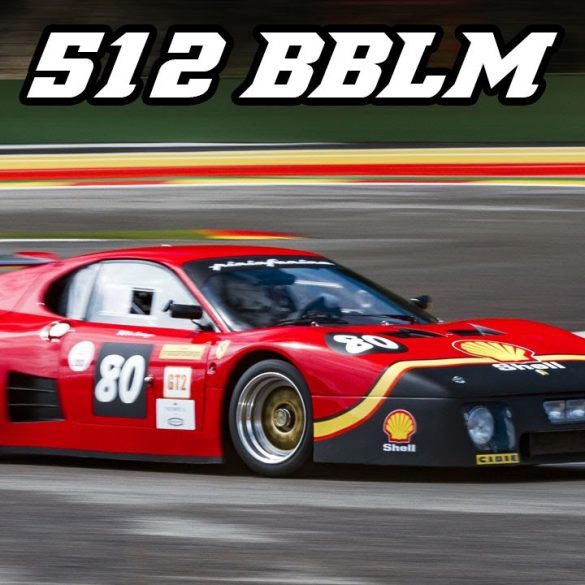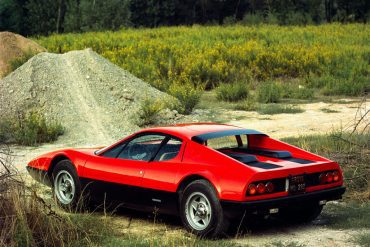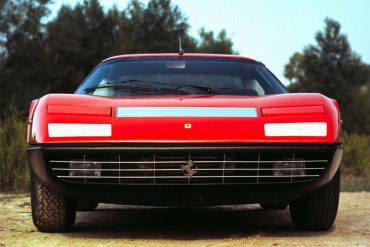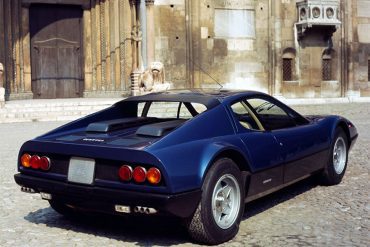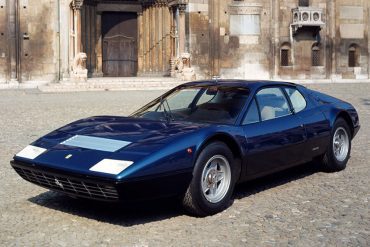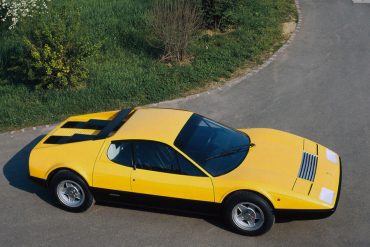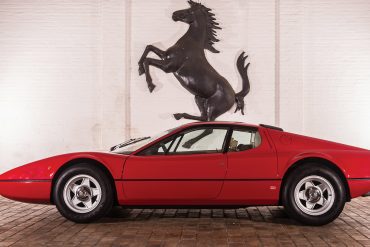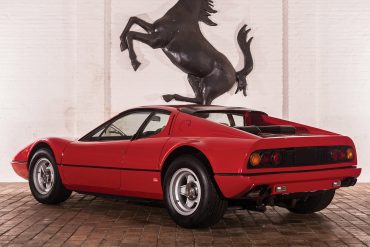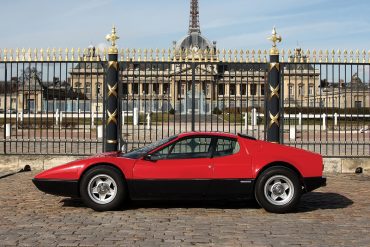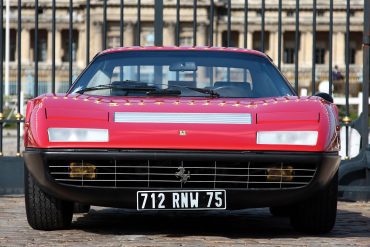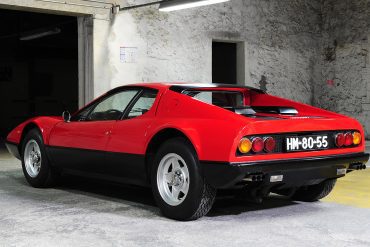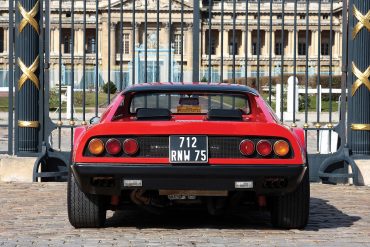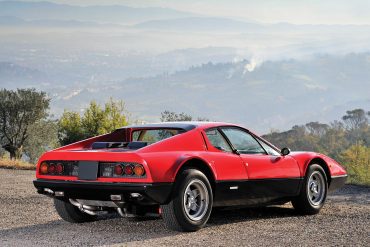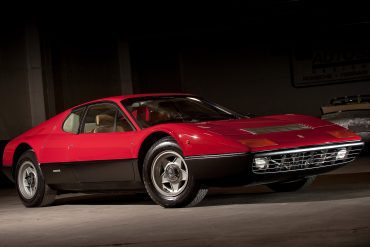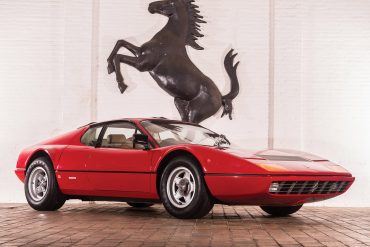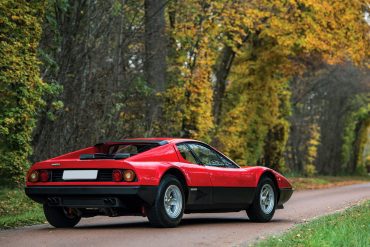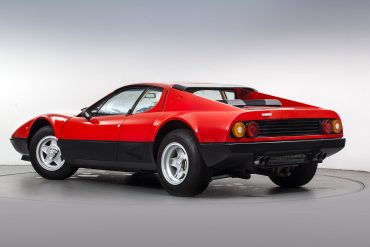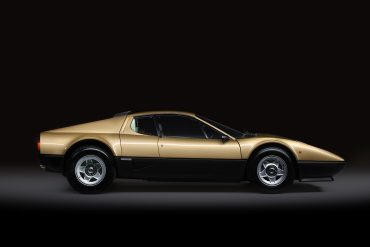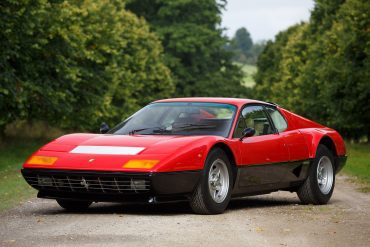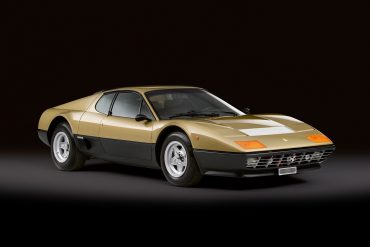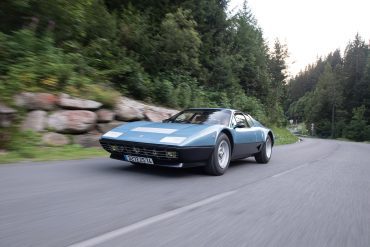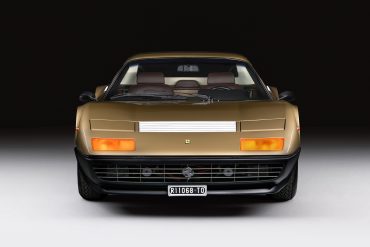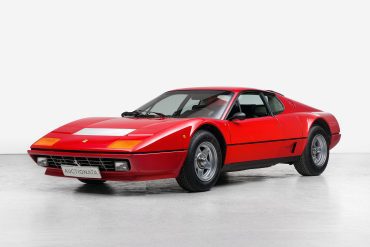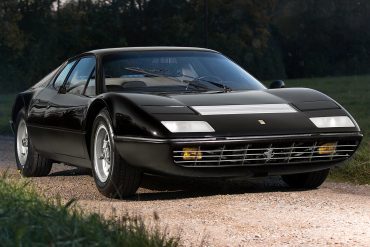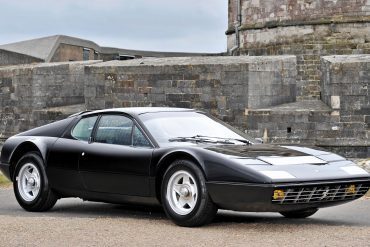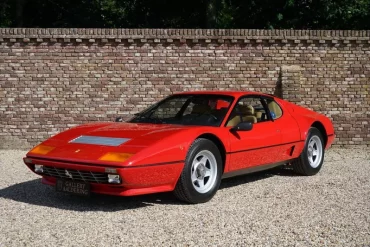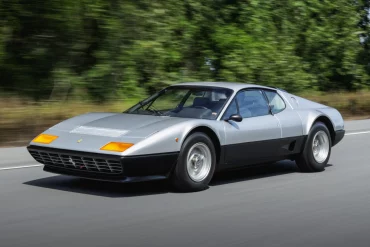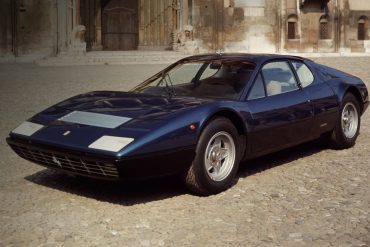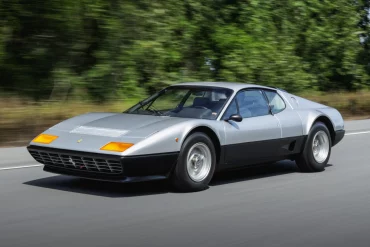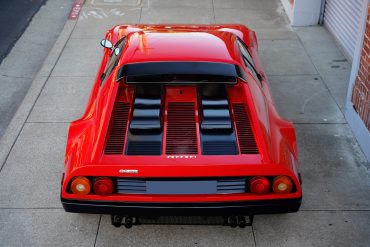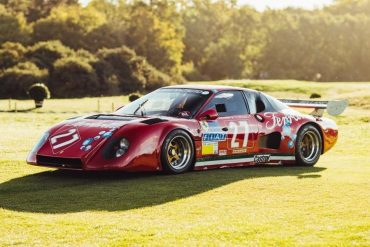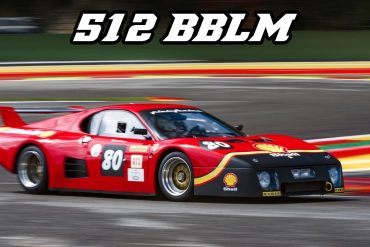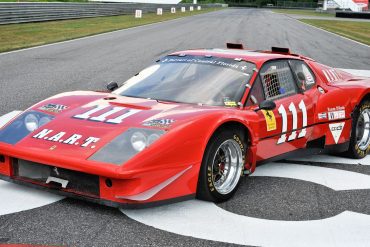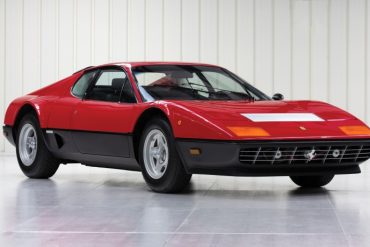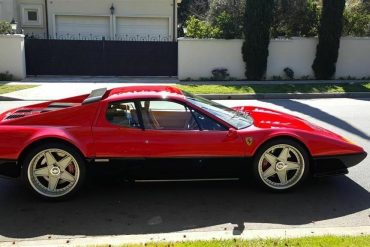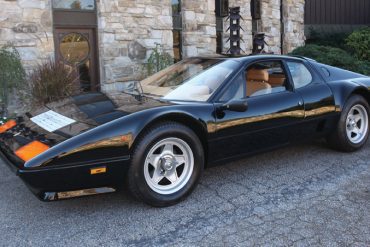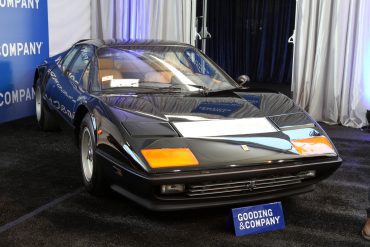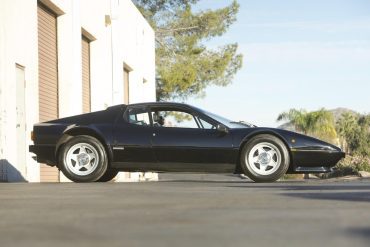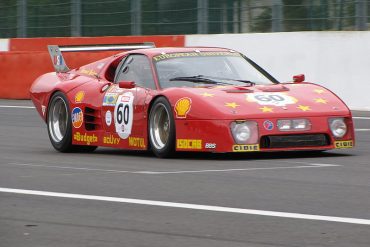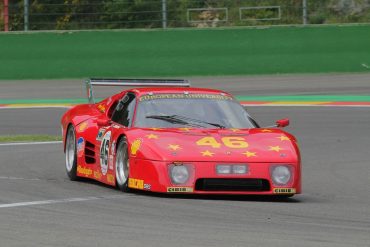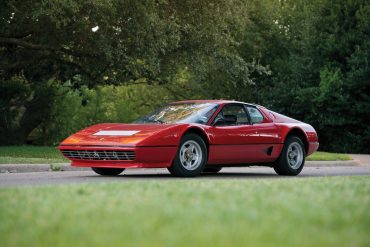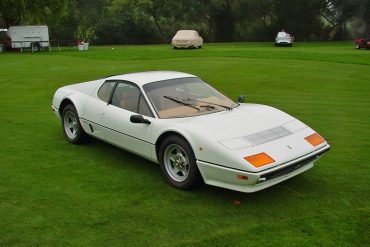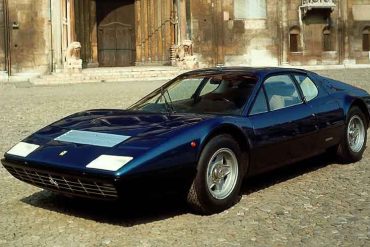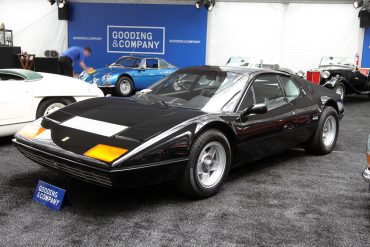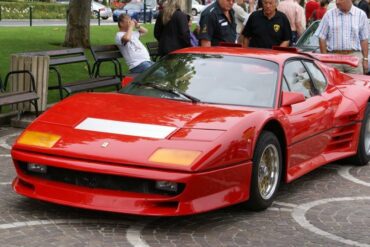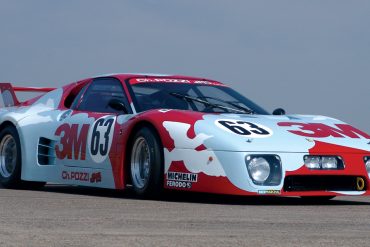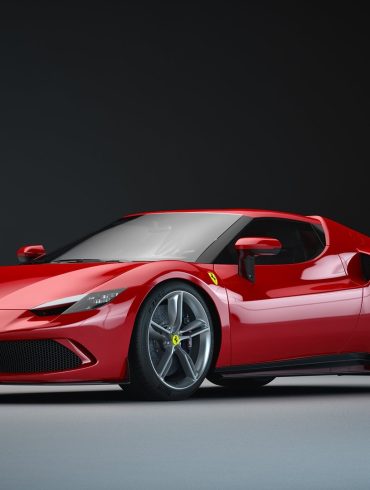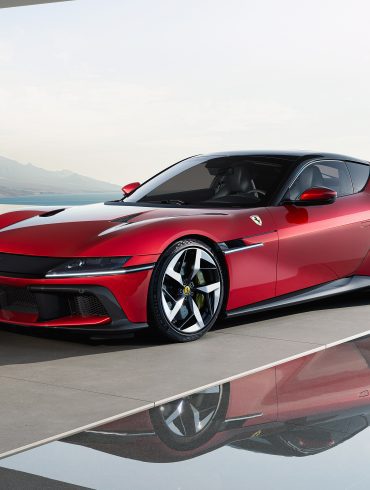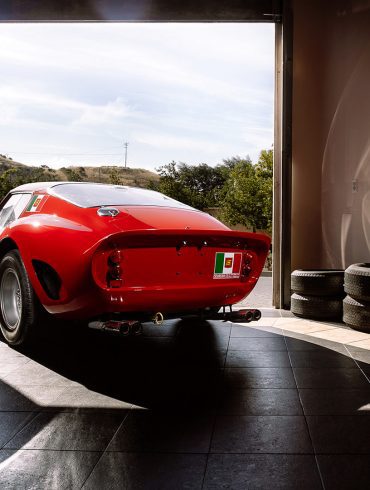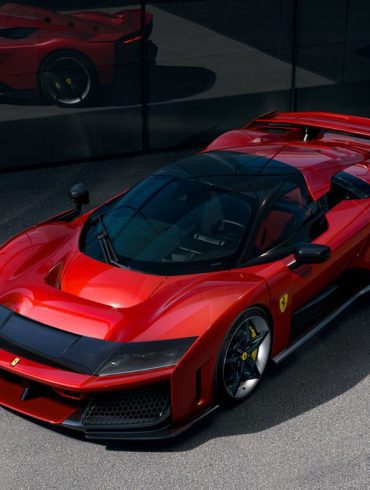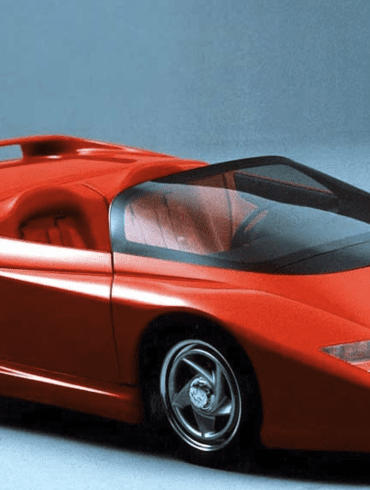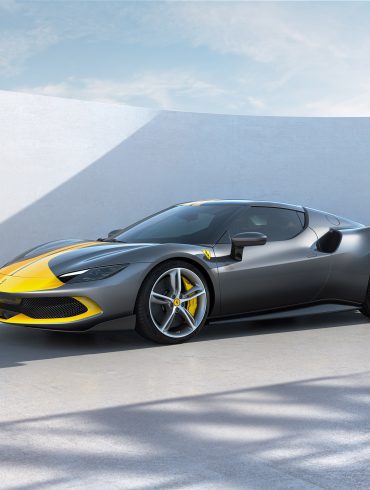Ferrari Berlinetta Boxer
Ultimate Guide to the 365 GT4 BB, 512 BB & 512 BBi
The Ferrari Berlinetta Boxer, a series of mid-engined V12 supercars produced throughout the 1970s and 80s, marked a radical departure for Ferrari, with its groundbreaking flat-12 engine, stunning Pininfarina design, and a legacy that shaped the future of high-performance automobiles.
Overview / Variants / Models In-Depth / Videos / Images / More Updates
Ferrari Berlinetta Boxer - Birth of the Mid-Engined Ferrari
The Ferrari Berlinetta Boxer (BB) series, produced between 1973 and 1984, was a defining moment in Ferrari’s history, marking the brand’s first series production mid-engine 12-cylinder cars. Built as a direct response to competitors like the Lamborghini Miura, the Berlinetta Boxer established Ferrari’s commitment to pushing the limits of performance and design.
Over its production run, Ferrari released three variants of the Berlinetta Boxer, each bringing refinements in power and styling. The BB series remains a cornerstone in Ferrari’s mid-engine legacy, blending radical innovation with traditional Italian craftsmanship. In this article, we’ll explore the history, model variants, performance, critical reception, and legacy of Ferrari’s Berlinetta Boxer.
Ferrari’s Leap to Mid-Engine V12
The Berlinetta Boxer’s introduction marked Ferrari’s departure from its long-standing tradition of front-engine, V12-powered grand tourers like the 365 GTB/4 Daytona. The shift was prompted by Lamborghini’s success with the Miura, which pioneered the mid-engine layout for high-performance sports cars. By positioning the engine behind the driver, Lamborghini was able to create a more agile car, with improved weight distribution and handling.
Ferrari initially resisted the mid-engine V12 concept for its flagship models, with Enzo Ferrari reportedly concerned about the stability and drivability of mid-engined cars for his clientele. However, as the competition evolved, Ferrari recognized the need to adapt. The Berlinetta Boxer project was born as Ferrari sought to redefine its approach to high-performance engineering. The BB would be Ferrari’s first production car to feature a mid-mounted flat-12 engine, setting a new standard in performance and influencing future models for decades to come.
Evolution of the Berlinetta Boxer
The Berlinetta Boxer series consisted of three main variants, each building on the last with improvements in performance, styling, and technology.
Ferrari 365 GT4 BB (1973-1976)
The Ferrari 365 GT4 BB debuted at the 1971 Turin Motor Show, with production beginning in 1973. Powered by a 4.4-liter flat-12 engine that produced 380 horsepower, the 365 GT4 BB was capable of reaching a top speed of 186 mph and could accelerate from 0-60 mph in around 5.4 seconds. The engine was mounted longitudinally behind the driver, creating a unique “boxer” configuration that gave the car its name.
Designed by Pininfarina, the 365 GT4 BB featured a sleek and aggressive shape, with distinctive front pop-up headlights, a low-slung profile, and bold rear buttresses. The interior was equally driver-focused, with minimal frills and a cockpit that emphasized functionality.
Despite its groundbreaking layout, the 365 GT4 BB faced some criticism for its stiff and challenging handling, especially at high speeds. Road & Track described it as “an exhilarating yet demanding car,” highlighting the learning curve required to handle the BB’s mid-engine dynamics.
Ferrari 512 BB (1976-1981)
In 1976, Ferrari introduced the 512 BB, an updated version of the Berlinetta Boxer with a larger, 5.0-liter flat-12 engine. This increase in engine capacity was intended to provide more low-end torque, making the car more manageable in various driving conditions. The 512 BB produced 360 horsepower and featured other mechanical improvements, such as revised suspension geometry and a dual-disc clutch that addressed some of the issues reported with the 365 GT4 BB.
The 512 BB also featured cosmetic changes, including a revised front bumper, larger rear air intakes, and an added front spoiler for improved aerodynamics. These updates gave the 512 BB a slightly more refined appearance while maintaining its signature aggressive stance.
The 512 BB received more favorable reviews for its drivability and balanced power delivery, with Car and Driver stating, “The 512 BB offers a blend of speed and sophistication that few cars of its time could match.” The car was still challenging to drive at the limit, but it was more refined and accessible than its predecessor.
Ferrari 512 BBi (1981-1984)
The final evolution in the Berlinetta Boxer series was the 512 BBi, introduced in 1981. The “i” in its name denoted the switch from carburetors to Bosch K-Jetronic fuel injection, a change made to comply with stricter emissions regulations in global markets, particularly in the United States. With the addition of fuel injection, the 512 BBi produced 340 horsepower, a slight reduction compared to the 512 BB, but it delivered smoother and more consistent performance.
The 512 BBi featured minor styling updates, such as more prominent front and rear bumpers, reflecting an increased focus on safety regulations. Despite the modest power reduction, the fuel injection provided a more responsive and refined driving experience, appealing to buyers looking for a more manageable and reliable Ferrari.
Motor Trend praised the 512 BBi for its “smoothness and sophistication,” noting that it was “a Ferrari for those who appreciate refined performance.” Although the rawness of the original 365 GT4 BB was diminished, the 512 BBi became popular for its usability without sacrificing the Boxer’s signature performance.
The Boxer Engine and Mid-Engine Layout
The Berlinetta Boxer series was a radical departure from Ferrari’s previous design philosophy, both in terms of its engine configuration and chassis layout.
Flat-12 Engine: The Boxer’s 12-cylinder engine was mounted flat, creating a lower center of gravity. This “boxer” layout reduced the car’s overall height, allowing for a sleek profile while also improving weight distribution. Although Ferrari referred to it as a “flat-12,” the engine design was technically a 180-degree V12.
Innovative Cooling and Aerodynamics: The Berlinetta Boxer’s mid-engine layout required advanced cooling solutions, with air intakes and radiators positioned in ways that optimized airflow around the car. The 512 BB and BBi, in particular, benefited from improved cooling and aerodynamic features.
Design by Pininfarina: The BB series was designed by Leonardo Fioravanti at Pininfarina, who combined Ferrari’s signature elegance with a bold, low-profile aesthetic. The design was as functional as it was beautiful, with a tapered nose, rear buttresses, and integrated spoilers that gave the Boxer a distinct presence on the road.
A Raw and Powerful Driving Experience
Each model in the Berlinetta Boxer series delivered impressive performance for its time, embodying Ferrari’s dedication to creating exhilarating, driver-focused cars.
365 GT4 BB: The first Berlinetta Boxer offered raw power, with 380 horsepower allowing for a top speed of 186 mph. Its acceleration and high-speed stability were impressive, though its handling could be challenging, especially for drivers unused to mid-engine cars.
512 BB: The larger engine in the 512 BB improved torque, making the car more flexible in lower gears and easier to drive. The 512 BB could achieve a top speed of 174 mph and a 0-60 mph time of 5.4 seconds.
512 BBi: The fuel-injected 512 BBi sacrificed some power for drivability but was considered the smoothest and most accessible BB to drive. Its more consistent power delivery and improved throttle response were appreciated by drivers who valued control and refinement.
Classic & Sports Car Magazine called the Berlinetta Boxer series “a thrilling blend of power and challenge,” emphasizing the car’s need for skillful driving and rewarding those who mastered it.
5. Critical Reception: A Mixed But Revered Icon
The Berlinetta Boxer was met with a mix of admiration and criticism during its production years. Enthusiasts loved its radical design, while others found it challenging to handle and maintain, given the complexity of its engine and layout.
Road & Track described the Berlinetta Boxer as “a car that demands respect,” capturing the essence of a high-performance Ferrari that tested the skills of its driver. The BB series appealed to purists who valued raw power and weren’t deterred by its quirks or handling challenges.
The Impact of the Berlinetta Boxer
The Berlinetta Boxer has secured its place in Ferrari’s legacy as a milestone in automotive engineering and a forerunner of Ferrari’s modern supercars. The BB laid the foundation for Ferrari’s subsequent mid-engine V12s, including the Testarossa, F512 M, and eventually, models like the 812 Competizione.
The Berlinetta Boxer has also become a collector’s favorite, especially among enthusiasts who appreciate Ferrari’s experimental period in the 1970s and 1980s. Its combination of beauty, performance, and historic significance has made it a sought-after classic, with rising values reflecting its importance.
The Berlinetta Boxer’s Timeless Appeal
The Ferrari Berlinetta Boxer series represents a key turning point in Ferrari’s history. As the brand’s first mid-engine 12-cylinder car, it redefined what a Ferrari grand tourer could be, combining innovative design with uncompromising power. Though challenging to drive, the Berlinetta Boxer remains a favorite among Ferrari enthusiasts and collectors for its timeless beauty, impressive performance, and pioneering spirit. Today, the BB stands as a testament to Ferrari’s commitment to pushing boundaries, a car that will always be celebrated for changing the course of Ferrari’s iconic V12 lineage.
Ferrari Berlinetta Boxer Specs
Manufacturer: Ferrari
Production: 1973–1984
Produced: 2,323 units
Assembly: Maranello, Italy
Designer: Leonardo Fioravanti
Class: Sports car (S)
Body style: 2-door berlinetta
Layout: Rear mid-engine, RWD
Engine: 4.4 L Tipo F102 A flat-12, 4.9 L Tipo F102 B flat-12, 4.9 L Tipo F110 A flat-12
Trans: 5-speed manual
Wheelbase: 2,500 mm (98.4 in)
Length: 4,400 mm (173.2 in)
Width: 1,830 mm (72.0 in)
Height: 1,120 mm (44.1 in)
Predecessor: Ferrari 365 GTB/4
Successor: Ferrari Testarossa
Did You Know?
The Berlinetta Boxer marked a radical departure for Ferrari, shifting from their traditional front-engined V12 layout to a mid-engined configuration. This move was inspired by their racing cars and aimed to improve performance and handling.
Despite the name, the Berlinetta Boxer's engine wasn't a true boxer engine with horizontally opposed cylinders. Instead, it was a 180-degree V12, often referred to as a "flat-12." This design provided a lower center of gravity and improved weight distribution.
Early 365 GT4 BB models featured a distinctive two-tone paint job, with a contrasting color on the lower body. This was due to the way the prototype was constructed by joining two separate body shells.
The BB is a fabulous car, even by Ferrari standards. It is very fast, handles beautifully, and is extremely civilized for a mid-engined machine.
Road & Track (1974)
Ferrari Berlinetta Boxer Variants
Designed by Leonardo Fioravanti of Pininfarina, the Berlinetta Boxer was the first of the Ferrari mid-engine road cars that changed the supercar market. Race cars were already using a mid-engined layout but it was the Lamborghini Miura that made Ferrari accelerate their plans for a mid-engined supercar. The debut of the 365 GT4 BB happened in 1971 at the Turin Motor Show. Gone was the old front-engine 365 GTB Daytona and in was the 365 GT4 BB. The Berlinetta Boxer platform was updated in 1976 with the 512 BB. The 512 BB has refinements to the drivetrain, including dry-sump lubrication, an increased compression ratio of 9:2.1 and larger rear wheels for better handling of the added power. Its new naming convention gave reference to the engine’s 5.0L displacement and the flat 12-cylinder layout. In 1981, further refinements were made for the last series, the 512 BBi, which included Bosch K-Jetronic fuel-injection with more low-end torque for better tractability and a dual-plate clutch for better city driving. Fuel injection also made it easier for federalizers to calibrate the ever-tightening emissions standards. Exterior differences included metric wheels and Michelin TRX tires along with changes to the front grille running lights.
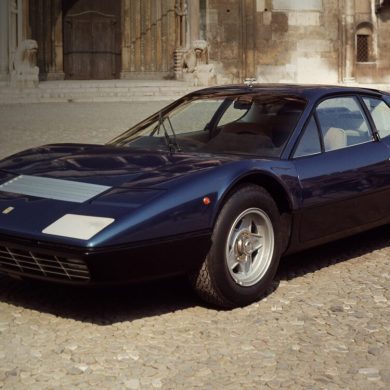
Ferrari 365 GT4 BB
Type: Production Car
Years: 1973 - 1976
Production: 387 units
Engine: 4.4 L Nat Asp Flat-12
Power: 339 bhp @ 7200 rpm
Torque: 335 lb/ft @ 6200 rpm
0-60 mph: 5.4 seconds
Top Speed: 188 mph
The Boxer Berlinetta marked a big change for Ferrari because the company moved a horizontally opposed engine layout for its new flagship car (thus the Berlinetta Boxer name). The first of Ferrari’s Berlinetta Boxer is the 365 GT4. The car was first shown at the 1971 Turin Motor Show and production began in 1973. Only 387 examples of the 365 GT4 BB were made until it was replaced outright with the 512 in 1976. Learn more.
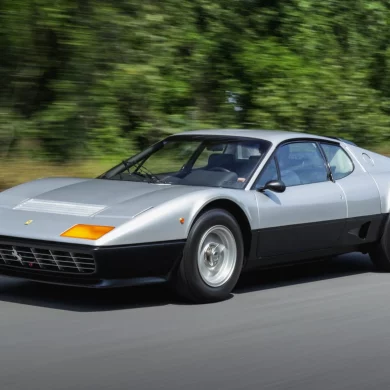
Ferrari 512 BB
Type: Production Car
Years: 1976 - 1981
Production: 929 units
Engine: 4.9 L Nat Asp Flat-12
Power: 360 bhp @ 6200 rpm
Torque: 332 lb/ft @ 4600 rpm
0-60 mph: 5.5 seconds
Top Speed: 160 mph
In 1976, Ferrari enlarged their flat-12 engine to 4942cc and created the 512 Berlinetta Boxer (BB). This is the car that replaced the 365 GTB / 4 (known as the Daytona) as Ferrari’s flagship car. The rest of the car was improved and in detail the 512 had many new changes. A dry sump lubrication system was also included. Compared to the 365 GT4 BB, the body was wider at the rear for larger tires a revised suspension. Learn more.
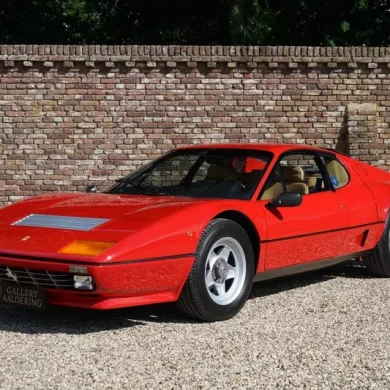
Ferrari 512 BBi
Type: Production Car
Years: 1981 - 1984
Production: 1,007 units
Engine: 4.9 L Nat Asp Flat-12
Power: 340 bhp @ 6000 rpm
Torque: 332 lb/ft @ 4200 rpm
0-60 mph: 5.4 seconds
Top Speed: 174 mph
In 1981 Ferrari updated the 512 BB to include Bosch K-Jetronic fuel injection and became known as the 512i BB. The fuel injection was a necessity to pass US emissions regulations. This modernized the car, as it produced less emissions and was thought to be more reliable and driveable once setup correctly. The 512i is a noticeable step up from the 512. The engine was both more efficient and cleaner. It was down on power though. Learn more.
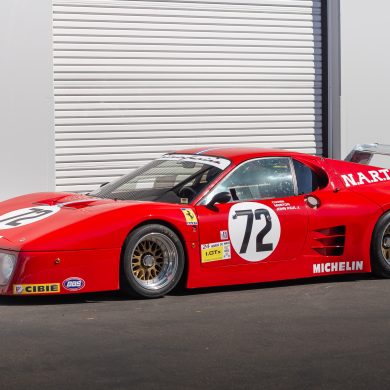
Ferrari 512 BB LM
Type: Race Car
Years: 1978 - 1984
Production: N/A units
Engine: 4.9 L Nat Asp Flat-12
Power: 500 bhp @ 7000 rpm
Torque: 333 ft lbs @ 4600 rpm
0-60 mph: N/A
Top Speed: N/A
The Ferrari 512 BB LM was a racing evolution of the 512 BB, designed to compete in international GT racing, most notably at Le Mans. Built from 1978 to 1984, it featured extensive modifications including a heavily revised 4.9-liter flat-12 engine, a lightweight tubular chassis, and dramatically flared bodywork. It secured class victories and podium finishes in other endurance races but didn't have success at Le Mans. Learn more.
The 512 BBi is a more civilized and user-friendly car than its predecessors. The fuel injection system makes it easier to drive, and the ride is more comfortable.
Road & Track (1982)


